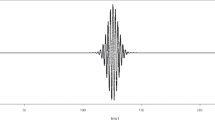Summary
Using the Lanczos scheme (tridiagonalization) we investigate the impurity contribution to the single-impurity Kondo model. This is accomplished by obtaining the ground-state energy of aN-particle system and a (N+1)-particle system, and obtaining the functional dependence ofg(J) (whereJ is the strength of the interaction). Hereg(J) is the coefficient of a correction term which is of order 1/N. The density of states at the Fermi level is effectively changed by the factorg(J). The excess heat capacity associated with the impurity is then proportional tog(J).
Riassunto
Usando lo schema di Lanczos (tridiagonalizzazione) si studia il contributo d'impurità al modello di Kondo ad impurità singola. Questo si fa ottenendo l'energia dello stato fondamentale di un sistema adN particelle e di un sistema adN+1 particelle nonché ottenendo la dipendenza funzionale dig(J) (doveJ è la forza di interazione). Quig(J) è il coefficiente di un termine di correzione di ordine 1/N. La densità degli stati al livello di Fermi è efficacemente cambiata dal fattoreg(J). La capacità di calore in eccesso associata all'impurità è quindi proporzionale ag(J).
Резюме
Используя схему Ланцоша (тридиагонализация), мы исследуем вклад примесей в модели Кондо. В этом подходе определяется энерчия основного состояния системыN-частиц и системы (N+1)-частиц, а также функциональная зависимостьg(J) (гдеJ есть интенсивность взаимодействия). Здесьg(J) есть коэффициент поправочного члена, который имеет порядок 1/N. Плотность состояний при энергии ферми эффективно меняется на факторg(J). Приращение теплоемкости, обусловленное примесями, прпорциональноg(J).
Similar content being viewed by others
References
J. D. Mancini andD. C. Mattis:Phys. Rev. B,28, 6061 (1983).
J. D. Mancini andD. C. Mattis:Phys. Rev. B,29, 6988 (1984).
J. D. Mancini andD. C. Mattis:Phys. Rev. B,31, 7440 (1985).
R. Haydock, V. Heine andM. J. Kelly,J. Phys. C,5, 2854 (1972);8, 2591 1975 alsoR. Haydock: inSolid State Physics: Advances in Research and Applications, Vol.35, edited byF. Seitz andD. Turnbull (Academic Press, New York, N.Y., 1980), p. 215.
J. Kondo:Prog. Theor. Phys.,32, 37 (1964).
J. Kondo:Solid State Physics, Vol.23, edited byF. Seitz, D. Turnbull andH. Ehrenreich (Academic Press, New York, N.Y., 1969).
See, for example,D. C. Mattis:Theory of Magnetism (Springer-Verlag, Berlin, 1981).
K. Yosida:Phys. Rev. 147, 223 (1966);Prog. Theor. Phys. (Kyoto),36, 875 (1966).
J. Kondo:Prog. Theor. Phys. (Kyoto),36, 429 (1966).
J. A. Appelbaum andJ. Kondo:Phys. Rev. Lett.,19, 906 (1967).
J. A. Appelbaum andJ. Kondo:Phys. Rev.,170, 540 (1968).
J. M. Ziman:Principles of the Theory of Solids, 2nd edition, (Cambridge University Press, Cambridge, 1972).
Author information
Authors and Affiliations
Additional information
To speed up publication, the authors of this papers have agreed to not receive the proofs for correction.
Rights and permissions
About this article
Cite this article
Mancini, J.D., Potter, C.D. Impurity contribution to the specific heat in the Kondo model. Il Nuovo Cimento D 9, 481–488 (1987). https://doi.org/10.1007/BF02667943
Received:
Issue Date:
DOI: https://doi.org/10.1007/BF02667943




